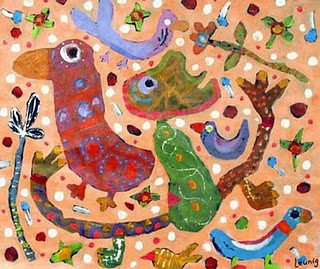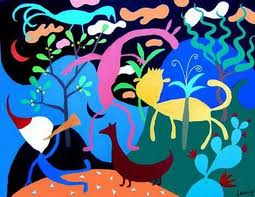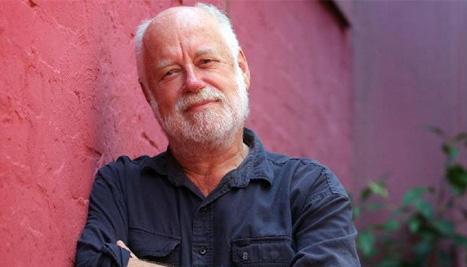Celebrating Christmas with Two Australian Icons: Michael Leunig and Phillip Adams
td Whittle
Posted on December 24, 2011
In the midst of so much exhaustion, tradition and repetition it is difficult to imagine that the original Christmas story was about the miracle of birth and renewal.
Yet out in the countryside, beyond the harsh gravity of the material world, far from Father Christmas and closer to Mother Nature, a wondrous child may behold the miracles of the bush and know that new life and great beauty are abundant and eternal. There is no monumental religious event in this infinity of detail and diversity; it is all part of a broader ancient miracle.
Huge clouds of brown butterflies swirl up into the dazzling light, parrots swoop to grassy earth, honeyeaters ravish the sweet flowers of the bottlebrush, echidnas trundle steadily in search of each other, lizards dart among ants and ancient rocks, the fine branchlets of the manna gums quiver to the mating growls of koalas, ibises stroll and feast on grasshoppers and gleaming Christmas beetles hang from eucalyptus leaves like small green baubles. The birds sing gloriously and not a wrong note is heard. This is Christmas in the bush.
If European symbols and traditions have grown tired, perfunctory and oppressively banal in Australia, or been drained of spirit and meaning by the dreary dictates of materialism and secularity, then the raw spirit truth of our native land in summer is alive and radiant by comparison.
For joy and meaning we might well turn to our natural country and witness miracles of vitality and new life, of inspiration and profound beauty; all in some humble, quiet and improbable place.

Illustration by Michael Leunig

Illustration by Michael Leunig
Learn more about Michael Leunig here: Michael Leunig’s Website and here: Artloft – Michael Leunig Paintings and Prints
Happy Christmas, Nan
by Phillip Adams
From The Australian
The Weekend Australian Magazine
December 17, 2011
I was raised by grandparents, William and Maud Smith, on a tiny farm long since subdivided for Melbourne’s suburban sprawl – or, as I preferred to call it, the brick veneerial disease.
Grandpa had worked the place with his twin brother Fred for half a century, living in tiny twin weatherboards shadowed by pines and peppercorns. Our other family member was a draught horse, Blossom, whose stable was considerably larger than both houses put together.
Bill and Fred were born poor and died poor. They’d never gone on a holiday or owned a car. Fred died first and when Grandpa got too crook to plough the paddocks Blossom got the idea, lay down in her stable and heaved a final sigh.

